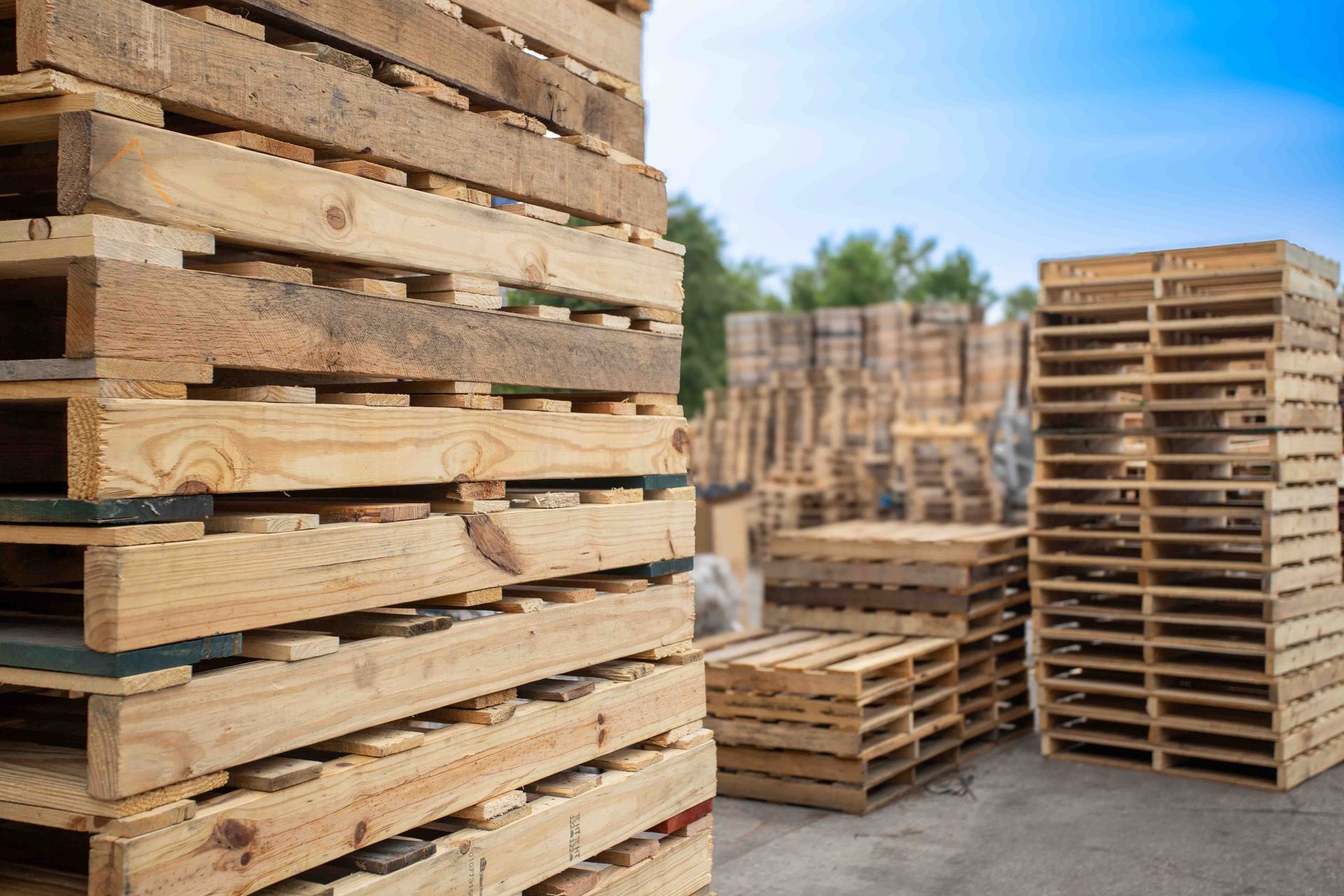Understanding Pallet Grades: A Guide For Businesses
Pallets are critical to safely transporting goods in industries where efficient shipping, warehousing, and storage are essential.
However, not all pallets are the same; different grades offer varying quality, durability, and cost-effectiveness, each impacting how businesses handle their operations.
Knowing the distinctions between pallet grades can help companies make smart choices that enhance operational efficiency and cost management.
This guide delves into the basics of pallet grades to help businesses determine the best type for their specific needs.
What Are Pallet Grades?
Pallet grades categorize pallets by quality, wear, and the degree of repair.
Typically, these grades focus on two main categories: new pallets, which are manufactured for the first time and have no previous use, and recycled or used pallets, which have been inspected, repaired, and sorted into different quality grades.
In most cases, pallet grading applies to recycled pallets. New pallets are inherently in the highest possible condition, while recycled pallets are classified based on their condition, affecting their price, durability, and intended application.
Each grade provides valuable information about the pallet's state and suitability for various uses, especially in terms of weight-bearing capability, aesthetic requirements, and lifespan.
The Key Pallet Grades Explained
The primary pallet grades buyers encounter are "Grade A" and "Grade B," each with distinct characteristics suited to particular uses.
Grade A Pallets
Often called #1 pallets or premium pallets, Grade A Pallets reflect the highest quality among recycled options; these pallets are close to new, with minimal wear, making them a dependable choice for more demanding applications.
Businesses that need reliable, durable pallets for retail, warehousing, or shipping most often opt for Grade A. These pallets generally have intact boards and stringers with only minor cosmetic flaws.
Repairs are kept to a minimum; if a repair has been made, it is typically high-quality and barely noticeable. Because of their reliability and quality, Grade A pallets are ideal for situations where pallets are visible to customers, loads are heavy, or they will undergo repeated use.
Grade B Pallets
Grade B Pallets are also called #2 pallets or Standard Pallets. These are more affordable than Grade A but usually show noticeable signs of wear or repair.
Many businesses prefer Grade B pallets for routine operations where visual appeal is less critical, but durability and function still matter. Grade B pallets often have multiple repairs, such as replaced boards or stringers, and may contain plugs or other reinforcements that indicate prior repairs.
While structurally sound, Grade B pallets are more cost-effective because of their appearance and slight imperfections, which do not impact their functionality. These pallets work well in applications such as internal warehouse storage or one-time transport of goods.
Grade C Pallets
Grade C Pallets are less commonly available but still helpful in specific contexts. They are heavily worn and may not meet the standard requirements for Grade A or B, but they are often the least expensive.
Grade C pallets may be heavily patched or reinforced with multiple repairs, and broken boards or weak stringers are common. Due to their condition, Grade C pallets are typically for limited applications.
Businesses may use them for short-term or one-time purposes, disposal applications, or transporting non-sensitive items.
Choosing the Right Pallet Grade
Selecting the appropriate pallet grade for your business depends on weight capacity, appearance requirements, budget, frequency of use, and environmental conditions.
For businesses handling heavy loads, higher-grade pallets like Grade A are essential for their structural integrity and safety. On the other hand, lighter loads or non-fragile items can often be transported using Grade B or C pallets, offering significant cost savings.
Additionally, if pallets are part of a client-facing environment or need to maintain a clean, polished look, higher-grade pallets are more suitable.
Budget is often a deciding factor in pallet grade selection, as Grade B pallets are more economical than Grade A options, especially for high-volume needs. However, a higher upfront investment in Grade A pallets might save on replacement costs over time, especially if the pallets will be used repeatedly.
Maximizing Your Pallet Investment
Once you've chosen the ideal pallet grade, maintaining your pallets can significantly extend their lifespan and save on replacement costs.
Regular inspections can identify minor issues, allowing you to address them before they become significant problems. Checking for cracks, splinters, or wear will help keep pallets in top condition, ensuring safe use and optimal functionality.
Proper handling practices can also help preserve your pallets. For example, cautious handling when using forklifts reduces the risk of accidental damage. Additionally, pallet storage should be in dry, well-ventilated areas to prevent exposure to moisture, which can weaken wooden pallets over time.
Many pallet companies also offer recycling programs that repair or refurbish pallets for reuse. These programs allow businesses to maximize pallet usage while supporting sustainability.
Work With Global ICB
At Global ICB, we have over 35 years of experience selling, servicing, and recycling pallets of all materials, grades, and conditions. With competitive pricing, custom designs, and nationwide delivery, we can ensure that your pallet needs are met, optimized, and exceeded.
No matter what grade pallet your organization needs, we can get you what you need!
Contact us today to discuss your specific need with one of our experts!




